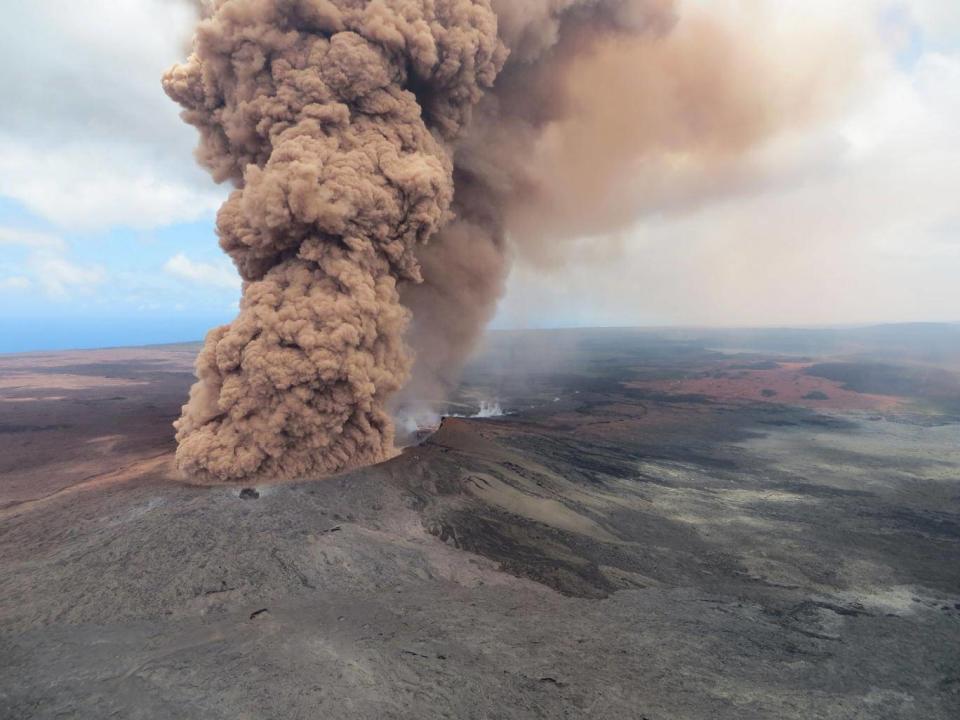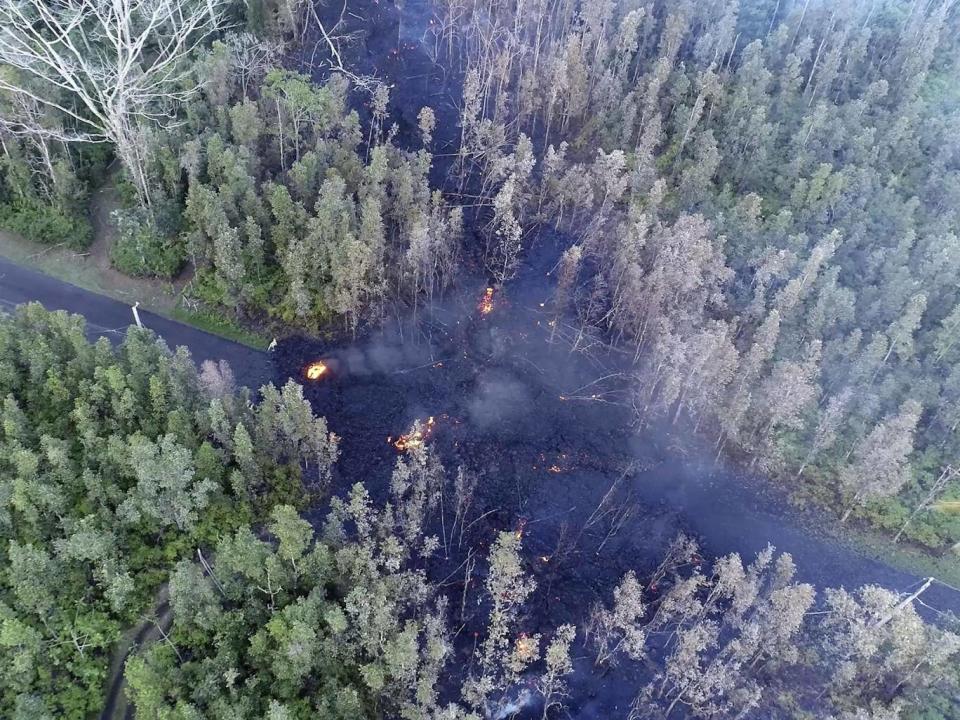Hawaii Kilauea volcano eruption: Thousands forced to evacuate after 6.9-magnitude earthquake strikes Big Island
Thousands of people have been evacuated from their homes on Hawaii’s Big Island after the Kilauea volcano spewed lava into residential areas and a series of earthquakes, including the largest to strike the state in 43 years, shook the island.
Multiple new vents, from which lava is spurting out of the ground, have formed and residents were warned to watch out for dangerous levels of sulphuric gas.
A 6.9 magnitude quake followed closely after a 5.8 magnitude, both occurring near a town whose residents already faced mandatory evacuations due to bubbling lava.
The latter, more powerful earthquake occurred in almost the same location as a 1975 tremor that killed two people, according to the US Geological Service, but there were no reports of casualties.
Big Island has been placed on high alert as scientists and local officials warned residents seismic and volcanic activity is likely to continue.
A spokeswoman for the Hawaiian Volcano Observatory, Janet Babb, said the earthquakes were caused as a result of the volcano adjusting to the shifting magma.
“The magma moving down the rift zones, it causes stress on the south flank of the volcano,” Babb said. “We’re just getting a series of earthquakes.”
The lava lake at Kilauea’s summit crater dropped significantly, suggesting the magma was moving eastward towards Puna, a mostly rural district of forests, papaya farms and lava fields left by previous eruptions.

Officials ordered more than 1,700 people out of Big Island communities near the lava, warning of the dangers of spattering hot rock and high levels of sulphuric gas that could threaten the elderly and people with breathing problems.
Two homes were burned by lava from the volcano.
No injuries or deaths have been reported, but the governor of Hawaii, David Ige, activated the Hawaii National Guard to provide emergency help.
Several more eruptive lava fissures have formed, bringing the total to six, according to the Hawaii County Civil Defence Agency.
Although no significant lava flows have yet formed, additional outbreaks of lava, which can reach temperatures of about 2,100 degrees Fahrenheit (1,150 Celsius), were expected, the agency said.
Hawaii Volcanoes National Park has evacuated all visitors and non-emergency staff. The quakes triggered rock slides on park trails and crater walls, while narrow fissures appeared on the ground at a building overlooking the crater at Kilauea’s summit.
The University of Hawaii at Hilo and Hawaii Community College have both closed campuses to allow students and employees to “attend to personal business and priorities.”
Authorities already had closed a long stretch of Highway 130, one of the main arteries through Puna, because of the threat of sulphuric gas.

Kilauea has been continuously erupting since 1983 and is one of five volcanoes to make up the Big Island. Activity increased earlier this week, indicating a possible new lava outbreak.
Earlier this week the crater floor began to collapse, triggering earthquakes and pushing the lava into new underground chambers.
The collapse caused magma to push more than 10 miles (16km) downslope towards the populated southeast coastline.
Residents have faced lava threats before.
In 2014, lava burned a house and destroyed a cemetery near the town of Pahoa. Residents were worried it would cover the town’s main road and cut off the community from the rest of the island, but the molten rock stalled.

From 1990 through 1991, lava slowly overtook the town of Kalapana, burning homes and covering roads and gardens.
Kilauea hasn’t been the kind of volcano that shoots lava from its summit into the sky, causing widespread destruction.
Instead, it tends to ooze lava from fissures in its sides, which often gives residents at least a few hours’ warning before it reaches their property.
Additional reporting by agencies

